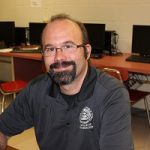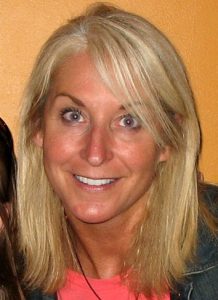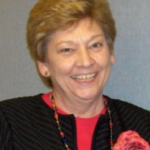Members of the VSTE Board of Directors will be taking time to periodically share their ideas and passions with the VSTE membership. In this edition, Board Member Josh Long provides ideas for implementing personalized learning.
Changing the way we teach is a difficult task. Asking anyone to change something they have been doing for a long period of time creates tension and stress. I think of a quote I saw from Woodrow Wilson; "If you want to make enemies, try to change something." Nothing can be truer than the changing environments of our classroom. I am currently in a district that is going through this change as we speak. It's a great change as we shift and dive our focus onto a focus of student learning. It is a philosophy that I embrace, it's good teaching, and it hits on everything that one of our previous bloggers touched on, which is personalized learning and personal learning. It is difficult trying not to be that person on the stage anymore giving all of the answers and all of the clues out to scholars. So how do you begin to let your scholars begin their journey on personalized learning and personal learning?
Here are my thoughts, take them with a grain of salt, as I am not an Orator… I am just a teacher of 16 years who believes that if you change the way you teach, it will benefit the scholars and practitioners around you.
- Know that personalized learning when it comes down to it is just good teaching practice…it is not something new; it is a change from the norm.
- Trust yourself to take on this change. You are good at what you do or you would not be in this position.
- Go in knowing that it is going to take time to change, it isn't something that is going to happen overnight, just like we can't expect scholars to change their way of learning overnight
- It is no secret that we are no longer teaching students for factory-based jobs. We are in the time of tailoring scholars for jobs that require global communication and understanding of different cultures. In most classrooms I observe, students are in rows, talking is done by the leader in the front, and time for discussion is held to a minimum... (If it's not broke don't fix it right?) The problem with that I believe is that we don't see the problems yet, but we will in the future.
- Understand that personalized learning isn't chaos in the classroom...it is just another way of students learning, in the manner that is best suited for them. This gives the practitioner a great vantage point of seeing and knowing how all of our scholars use to learn. In fact it most likely will be less chaotic in the room as students will be doing something that is meaningful to them which means they will be engaged in their own learning and not their neighbors.
- Personalized learning to me also doesn’t mean putting them in front of a device and expecting them to learn everything from the computer or a piece of software. Communication is the key, I believe, to good personalized learning. That may occur with a Skype call to an expert in the field, or seeing a scientist working with animals in their respective field.
- Lean on your peers for help. Working together to come up with lessons that will inspire your scholars to dive deeper into their learning will make it shine on how much they have actually gained and learned through their unit of inquiry.
- Lesson plans are a one way street sometimes. Through personalized learning there are many ways to get to the end of the road, with frequent stops along the way to help gain further and deeper understanding of a topic or thought (Understand though that I’m not saying a lesson plan can’t do that…many times in my class we would wander off the beaten path to discuss something related to the topic at hand.)
I hope that you too can find the way to change the way you reach out to your scholars, and know that yes, it really does look a lot different now than when we were sitting in those chairs those many years ago.
Josh Long is the Supervisor of Technology for Fredericksburg City Schools.








